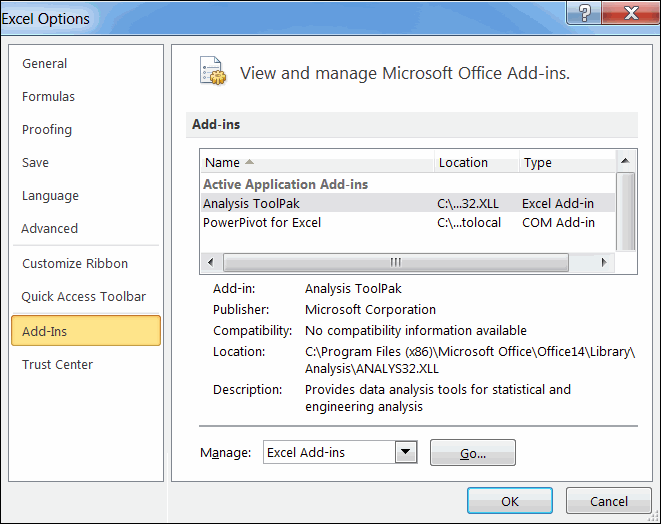

The Analyze in Excel is a Power BI service feature, and is not available in Power BI Report Server or Power BI Embedded.Īnalyze in Excel is only supported on machines running Microsoft Windows. A user could have this in several ways, such as being a member of the workspace containing the dataset, having a report or dashboard shared to them that uses the dataset, or having permission to an app that contains the dataset. Users can connect to datasets through Analyze in Excel if they have read permission on the underlying dataset. Excel for the Mac I do not use a Mac, so Im dont know for sure how the ToolPac for the Mac works. Step 3: Choose A1:A15 as the input range, choose Columns for Grouped By, tick for Labels in the first row. Step 2: Choose Descriptive Statistics from the list and click on OK.

After you load the Analysis ToolPak, the Data Analysis command is available under the Data tab. Step 1: Click on the Data Analysis command available in the Analysis group in Data. Where it says Manage at the bottom, select Excel Add-ins from the drop-down menu. To learn more about the differences in functionality between license types, take a look at Power BI features by license type. To perform data analysis on the remainder of the worksheets, recalculate the analysis tool for each worksheet. Click on the File tab on the top left, then select Options. If you’re unable to install the updates, check with your administrator.Īnalyze in Excel requires that the dataset be in Power BI Premium or that the user have a Power BI Pro license. Some organizations may have Group Policy rules that prevent installing the required Analyze in Excel updates to Excel.

Your dataset in Power BI must have pre-defined measures. You can check the following requirements:Īnalyze in Excel is supported for Microsoft Excel 2010 SP1 and later.Įxcel PivotTables do not support drag-and-drop aggregation of numeric fields.


 0 kommentar(er)
0 kommentar(er)
